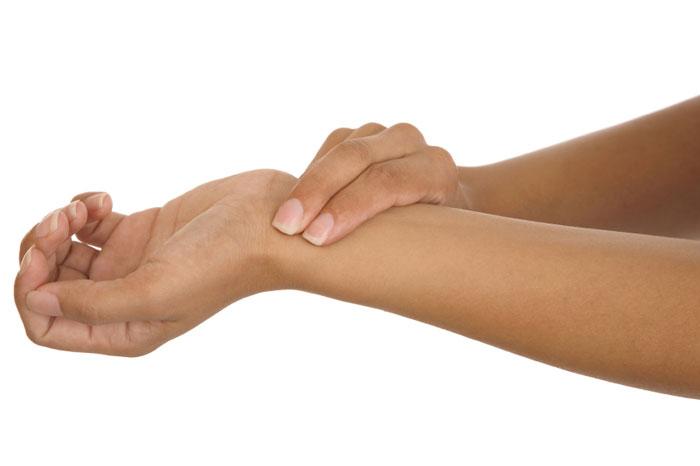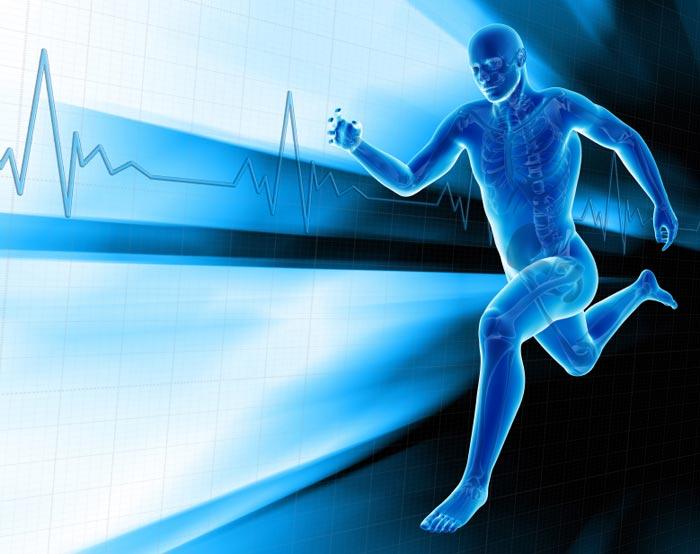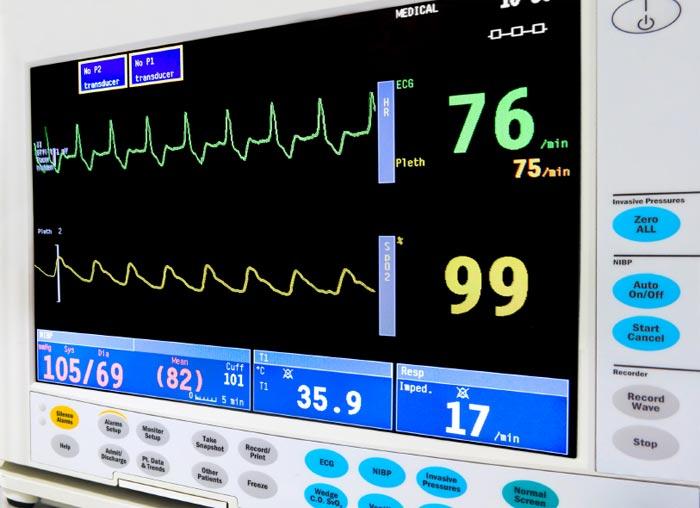Heart rate is one of our vital signs and is defined as the number of times per minute that our heart beats or contracts. 1
- Heart rate varies, we have a resting heart rate, which as its name suggests, is the rate at which your heart beats when you are relaxed
- Our heart rate increases with exercise, with the goal of providing more oxygen and energy to the activity being playing.
Heart rate can shoot up dramatically in response to adrenaline, thus preparing for the reaction of "fight-flight".
Adrenaline is a hormone also known as epinephrine. 2
When we are scared or surprised, our heart automatically increases your heart rate in response to adrenaline experience and preparing to use more oxygen and energy in the fight-flight reaction. 2
General information on heart rate and pulse
Find here some general information about heart rate and pulse. More details and additional information in the body of this article.
- Heart rate is the number of times per minute beating heart.
- The heart rate increases significantly in response to adrenaline when a person is scared or surprised.
- You take the pulse of a person is considered to directly measure your heart rate.
- The pulse can be measured by gently pressing two fingers on the wrist of a person.
- A weaker pulse can also be felt behind the knees, groin, on the temples and on top of the inside of the foot.
- The normal heart rate for an adult at rest is between 60-100 beats per minute.
- Some experts athletes may experience a decline in resting heart rate, being less than 60 beats per minute.
- Tachycardia refers to the increase in heart rate at rest, more than 100 beats per minute.
- Bradycardia refers to a slow heart rate, usually less than 60 beats per minute.
- According to the American Heart Association heart rate during exercise is about 220 minus (-) the age of the person.
What is the difference between heart rate and pulse?
Pulse is the number of times per minute that our arteries expand and contract in response to the heart.
This is exactly the same as our heart rate, the rate of heart contractions, because in our heart these contractions are those that produce the arterial pulse and pressure increase therein. 1
Therefore, to take the pulse of a person your heart rate is measured directly. 1
How to measure your pulse and heart rate?
Arteries that run near the surface of the skin of the wrist and neck allows palpable pulse at those points.

The easiest way to measure your heart rate is to take the pulse at the wrist.
Find below a reminder of how to take the pulse and heart rate: 3.4
- Simply place two fingers on your wrist and press gently until you can feel the pulse
- Count the number of beats that has meaning in the space of a minute or 30 seconds and duplicate it.
To take your pulse, you must use your first two fingers (index and ring) while holding his wrist with internal up, find the pulse on the side that is in line with the base of your thumb.
The pulse can also be taken in the neck, gently pressing the same two fingers into the grooves found on each side of the jaw (trachea).
These are other places where the arteries run close to the surface of the skin, but is less easy to feel the pulse:
- Behind the knees
- In the groin
- In the temples
- At the top of the inside of the foot.
Normal heart rate at rest
National Institutes of Health in the United States published a list of resting heart rates that are considered normal. It is claimed that the pulse becomes progressively slower in the transition from childhood to adolescence.
The normal heart rate at rest for adults (including seniors and children 10 and older) is: 4
- Between 60 and 100 beats per minute.
Athletes and athletes with a history of intense training may experience a decrease in heart rate at rest (less than 60 beats per minute) can reach up to a minimum of 40 beats per minute.
The following list shows how the heart rate (in beats per minute) is gradually reduced through the childhood years: 4
- First month of life: 70-190
- Between one and eleven months: 80-160
- Between one and two years: 80-130
- Between three and four years of age: 80-120
- Between five and six years of age: 75-115
- Between seven and nine years of age: 70-110
- After ten years of age: 60-100.
The normal heart rate undergoes variations are considered positive, as when increases in response to certain conditions including exercise, body temperature, body position and emotions (such as anxiety and arousal). 5
The abnormal heart rhythms have their own medical terms presented below, (values given are typical, however to being above or below these figures may be normal and harmless to some people): 6
- Tachycardia is when the heart beats too fast at rest (usually over 100 beats per minute)
- Bradycardia, however, when the heart rate is too slow (generally less than 60 beats per minute).
Effects of exercise on heart rate
As mentioned previously, the resting heart rate of athletes and athletes who train regularly is lower than the least active people. Likewise, heart rate than a normal person experiences when performing physical effort also often taper if you exercise regularly.

Regular exercise reduces both athletic resting heart rate, and the maximum rate during strenuous activities.
The American Heart Association (AHA) has also issued his concept of the relationship between exercise and heart rate.
The AHA says that the maximum heart rate during exercise is about 220 minus (-) the age of the person.7
Thus, the maximum heart rate averaged a 40 year old during the year would be around 180 beats per minute (220-40 = 180).
The AHA states that reach a target heart rate during exercise is possible through the gradual increase in effort. Suggests that this target heart rate between 50% and 85% of the formula 220 minus (-) age of the person, adding that even if the heart rate continues to increase during exercise, the effort can be lessened until the physical condition gradually improves. More about the target heart rate AHA .
The American Cancer Society raises similar recommendations to achieve ideal heart rate through exercise, and also presents a quick way to calculate it based on the age of the person through an online calculator .
These improvements in fitness, applies to those most committed to athletic exercise, but it should be noted that this progress can take up to 6 months to reflect, according to findings of the AHA. However, all persons are we encouraged to participate in at least a minimum level of physical activity. The AHA provides a graph with recommendations for physical activity in adults , which includes several options, among these regular walks.
What keeps the heart beating?
Electricity keeps the beating heart. Heartbeats and frequency are regulated by the natural pacemaker of this.

Heart rate reading and electrocardiogram (ECG / EKG) shown at the top of the heart rate monitor.
The natural pacemaker of the heart called the sinus node or sinoatrial (SA), which is made up of special cells that allow the electrical impulse that gives rise to a contraction of the heart muscle is believed and pumping blood. 8
The natural pacemaker is an electrical conduction system of the heart. The electrocardiogram (ECG or EKG) readings of the electrical pulse emitted and spread from the top to the bottom of the heart. 9
Possibly the most iconic and widely known medicine elements are the pulse, heart rate, and the well-known image depicting reading an electrocardiogram (ECG / EKG), which is often associated the sound of a heartbeat The classic sound "lud-dub".
References:
1.
Johns Hopkins
Medicine Vital signs (body temperature,
pulse rate, respiration rate, blood pressure). Baltimore, US:
Johns Hopkins Health Library. Information published online, accessed
February 11th, 2014.
2.
Society for
Endocrinology. Adrenaline. Bristol, UK: Society for
Endocrinology. Information published online, accessed February 11th, 2014.
3.
UK National Health
Service How do I check my pulse? London,
UK: NHS Choices. Information published online, accessed February 11th,
2014.
4.
National Institutes of
Health. Press. Medline
Plus, US National Library of Medicine. Bethesda, US: NIH. Information
published online, accessed February 11th, 2014.
5.
American Heart
Association. All about heart rate (pulse). Dallas,
US: AHA. Information published online, accessed February 11th, 2014.
6.
Heart Rhythm Society. Slow heartbeat. Washington,
US: Heart Rhythm Society. Information published online, accessed February
11th, 2014.
7.
American Heart Association. Target heart rates. Dallas,
US: AHA. Information published online, accessed February 11th, 2014.
8.
Boston Scientific. Your heart's electrical system. Natick,
US: Boston Scientific. Information published online, accessed February
11th, 2014.
9.
National Institutes of
Health. What is an electrocardiogram? Bethesda,
US: National Heart, Lung and Blood Institute, NIH. Information published
online, accessed February 11th, 2014.
No comments:
Post a Comment